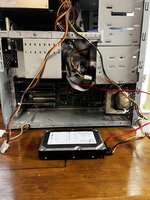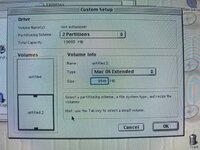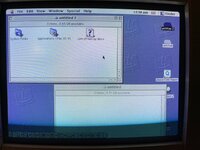macuserman
Well-known member
Hang in there! It wouldn’t hurt to snag a sata card just for kicks as well they are handy to have around and work in lots of setups.Me too
Let's hope!
This system has truly tested my patients. When I bought it, I thought it was going to be straightforward — no soldering and no retr0britghtning. Instead a harddrive killed by someone else's porn collection and ATA-bus that behaves like a two-year old.
Here’s one on a Power Tower Pro I’m working on.

Works flawlessly with the sata spinning disk I have hooked up on os 9.


